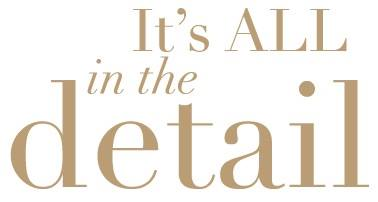
“I'm a doodler, he's a
doodler,
She's a doodler, we're
a doodler,
Wouldn't you like to
be a doodler, too?“
Ok, so I took a little
liberty here, but you get my drift, right?

Did you ever get caught in a meeting or class while covering an important piece of paper, memo, note, report, ticket, etc. with scribbles? Did you feel embarrassment for being ‘caught’?
Today, the doodle nay-sayers are being drowned out by growing research and opinion that indicates a connection between seemingly distracted scribbling with greater information retention and creativity. Companies like Dell, Zappos, and Disney are eager for employees to doodle on the job—they even pay consultants to help them. Seriously, they get PAID to doodle! Once again, I was at the train station when my ship came in!

Well, I found this great ‘enabler’ book, The Doodle Revolution by Sunni Brown whose creative consultancy Sunni Brown Ink, teaches "applied visual thinking"— a.k.a doodling—to coders, designers, and even journalists. Ms. Brown says, "I can’t tell you how important it is to draw. It gets the neurons to fire and expands the mind."
In the book, she shares some of her doodling "dos."

WHY DOODLE
Studies have shown
that doodling can free up short- and long-term memory, improve content
retention and increase attention span. It can also produce creative insight,
because "when the mind starts to engage with visual language, you get
neurological access that you don’t have when you're in a linguistic mode,"
says Brown.
Most of us use
reading, writing, and talking to brainstorm, but "the human mind is very
habit forming," she says. To break that habit, you have to think in an
unfamiliar medium—a visual medium.
WHAT TO DOODLE
These
Brown-recommended doodling exercises will help you rethink the familiar and
make unexpected connections.
"Atomization." Take an object and visually break it down into its tiniest parts.
If you start with the word "raccoon," you might draw claws, a
robber's mask and a trash can. As Brown says, "any element of a
raccoon—its body or environment—becomes a way of looking at the animal that you
didn’t think about" when you considered it as a whole.
"Game-Storming." Take two unrelated things, like elephants and ice cream, and draw
them in their atomized parts. Then create drawings that randomly fuse these
parts together. Like trunk-cones or melting ears. Brown has used this technique
to help journalists think up unique story angles.
"Process
Map." Having trouble
thinking through a problem? Create a visual display that illustrates
(literally) the sequence of events. Brown calls this a "cause and effect
doodle." Sometimes, looking at pictures can help your brain make sense of
a complex system better than words.

JFK, word doodling "Fidel Castro"
WHEN TO DOODLE
A lesson or presentation is a
particularly great time to doodle. "Few of us can effectively take
point-by-point linguistic notes while listening to people talk, because the
auditory information competes with the written information," says Brown.
But visual attention is like a learning loophole; it doesn't compete with what
we hear. That's why doodling in school can actually help you learn. Brown says
that abstract doodling is great for these occasions, as are
"info-doodles"—a combination of images and key words.

Of course, words are images. "But with
language, there are too many tiny images crammed together, so the brain chokes
up," says Brown. "The optimal scenario for trying to learn a subject
seems to be partly visual, partly linguistic. It gives your brain two layers of
richness."
WHERE TO DOODLE
The answer, according
to Brown, is anywhere. "When I work with companies, the room has to be
almost 80% white space, and if they don't have it, we design it for them,"
she says. This isn't just about helping CEOs unlock their inner child. It's
about creating a fully immersive learning environment. "Your mind only has
a certain capacity for storing information, so it's important to have a
physically large playing field for the brain to consider different visual
possibilities." Therefore, Brown encourages people to "draw on the
floor, on each other, on table tops."
HOW TO DOODLE
Your ability to accurately render
a cow or tree does not make doodling a more effective creative tool. "It's
not art class," says Brown. But it does help to have a visual alphabet.
Like the ABCs, Brown teaches her clients 12 basic shapes—including dots, lines,
angles, spirals, and triangles.
"When you have that alphabet
available to you, you start to break the world down into visual components. A
tree becomes a line with a bunch of other lines branching off." Soon, you
realize that you can draw almost any object—or an approximation of it. Doodling
works the best when it's spontaneous, which means your brain can't be worrying
about how to sketch that rocket ship.
All that matters, says Brown, is that your doodles "let you see something
that you didn't see before."
While doing a little research for this post, I found a
kindred soul, Ellen van de Sande and her gorgeous blog, The Absent Mind. And I found her beautiful (and mind hauntingly
familiar to my) doodles.

"Wouldn’t you like to be a doodler,
too?"
So, if you’re a
doodler, too… what do you doodle? I doodle lines, boxes within boxes, squares,
parallel lines, mazes, everything lined up neatly and spaced properly…
remember, I’m that OCD person!




